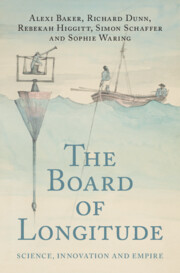Refine search
Actions for selected content:
3 results
9 - A Practical Institution Weighed Down by Impractical Proposals?
-
-
- Book:
- The Board of Longitude
- Published online:
- 11 April 2025
- Print publication:
- 17 April 2025, pp 210-228
-
- Chapter
- Export citation
2 - Sailing the Oceans and Seeking Longitude before 1714
-
-
- Book:
- The Board of Longitude
- Published online:
- 11 April 2025
- Print publication:
- 17 April 2025, pp 19-38
-
- Chapter
- Export citation

The Board of Longitude
- Science, Innovation and Empire
-
- Published online:
- 11 April 2025
- Print publication:
- 17 April 2025
